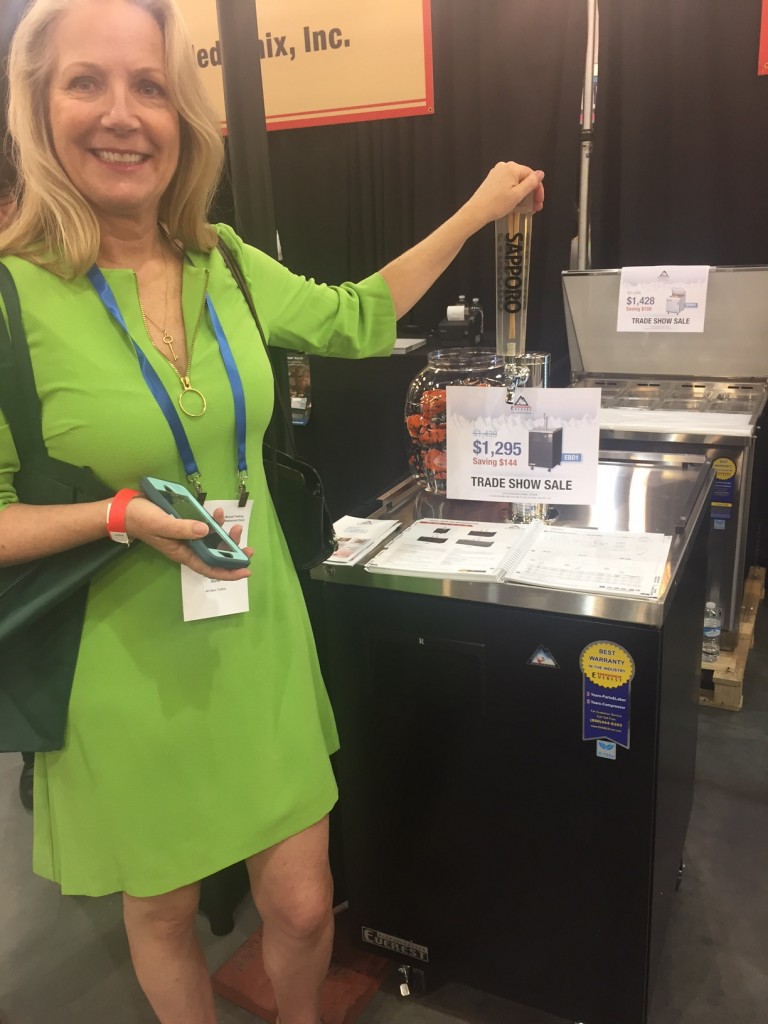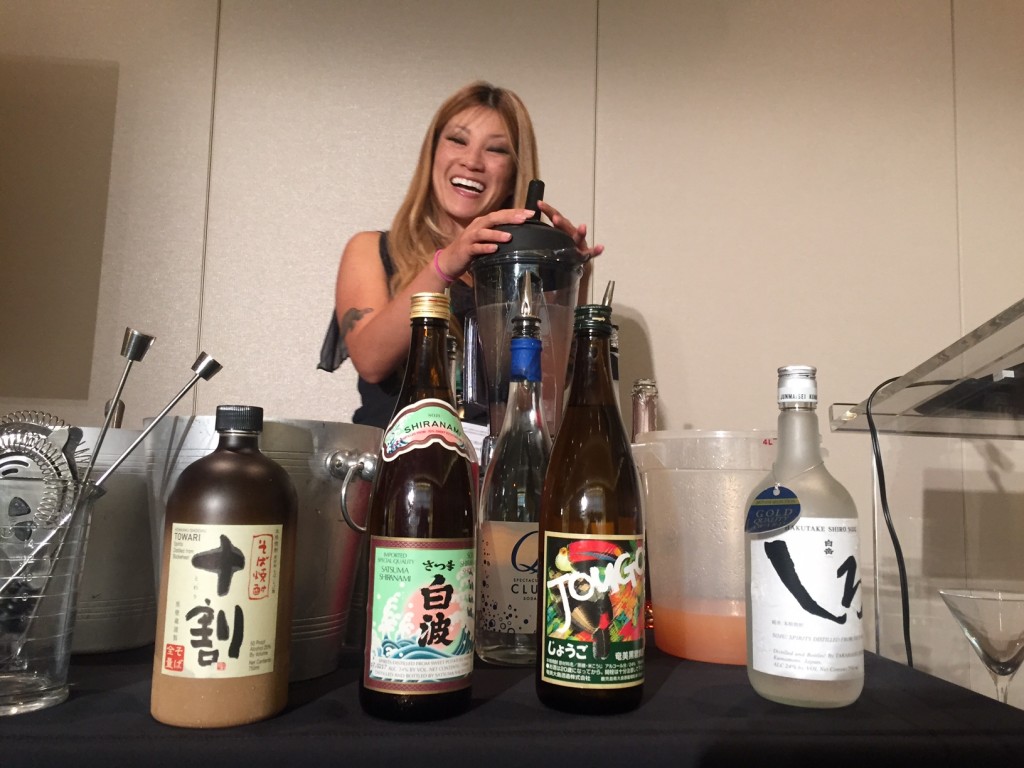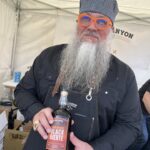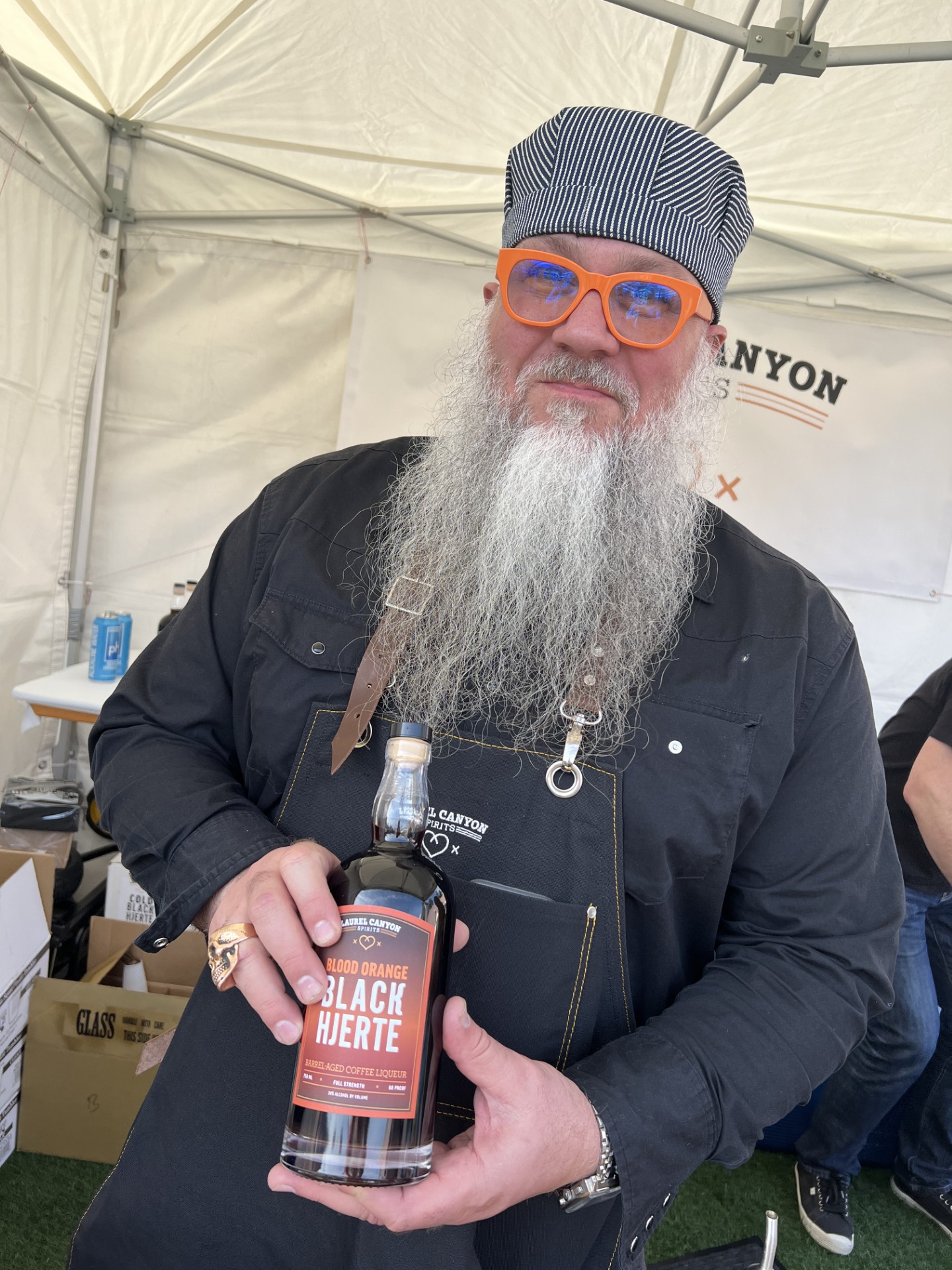Just when I thought I might have seen and tasted it all – a statement in and of itself is a bit crazy – I attended my first Japanese Food and Restaurant Expo. Of course there were terrific samples of fine Japanese food, an array of incredible knives and the type of service ware that you would expect from a country that excels in culinary presentation.
 What I didn’t expect was the wide selection of sake and shochu I would want to taste, and a couple of educational classes thrown in for good measure. You ready for your sample? (Most of the photos I took I compiled into three grids that can be seen here.)
What I didn’t expect was the wide selection of sake and shochu I would want to taste, and a couple of educational classes thrown in for good measure. You ready for your sample? (Most of the photos I took I compiled into three grids that can be seen here.)
For part one of my coverage I will share information from the classes offered at what was billed as “A Trade Show for Trade Professionals.” The first was on the use of shochu in cocktails, and the second on the differences between warm and cold sake. (If you want to know the difference between sake and shochu in general tune in next week for part two where we will be tasting quite a few of each.)
Shochu Cocktail Demo by Jaymee Mandeville
Mandeville is a national brand ambassador and former bartender with several certifications under her belt. The first thing she wanted us to know about shochu was that it was versatile, and thereby can used instead of spirits for bars and restaurants that don’t have full liquor licenses. It has a lower ABV (alcohol by volume) designation than full spirits have, but a higher ABV than wine or sake.
One idea Mandeville shared was that restaurants that feature shochu-based cocktails could present them on a bar menu as “Low Alcohol Content” drinks. I found this interesting as some people seem unaware that their shochu cocktail isn’t going to have near the alcohol as a full strength version.
It appealed to me, but not so sure about the person who is out just for a buzz.
Mandeville, much like the best bartenders, believes in batching some of the ingredients ahead of time, so that when the cocktail is ordered the guest doesn’t have to wait too long until it’s in their hands. She also suggested keeping fresh citrus at the bar. The juice, slice and rinds can all be utilized in different cocktails.
Trends to watch included Frose (aka Froze) which is variations of rose wine with additional alcohol blended into a frozen cocktail; Tiki drinks (rum drinks from the past revived); Vintage cocktails like the Manhattan, Old Fashioned and Sazerac; Spice(y) which is going to be either the addition of spice for say a seasonal wintery drink (cinnamon, nutmeg) or spicy additions (like jalapeno or other peppers).

The drinks Mandeville made for us to sample included a Frose (yummy and sweet), a gin and tonic (more savory with the shochu in my opinion) and a Berry Berry Spicy (with Jalapeno that I would’ve never ordered but was outstanding). One student in our class asked about using wasabi in cocktails, Mandeville said it would be best in a shochu-based Bloody Mary.
Sake Samurai Toshio Ueno and Chizuko Niikawa-Helton
Ueno was my sake instructor earlier this year, for the WSET (Wine and Spirits Education Trust) Level One in sake, so I was thrilled to be learning from him again. He also introduced fellow educator Niikawa-Helton as an expert in warm sake.
This was interesting to me as once I discovered cold sake I never went back to warm.
Come to find out that just like seasonal cocktails, Japanese people drink their sake warm in the winter and cold in the summer. Warmed sake can make sweetness, bitterness and/or acidity more prominent. Heating sake is also a form of hospitality, obviously showing your guest that you care about their comfort.
What was even more interesting to me were two side-by-side sake tastings: one warm and one cold. After noting the aromas and flavors in both, and finding them starkly different, I declared, “Oh, these are two different sakes” only to find out I was dead wrong.
Wow. Sake epiphany! The same sake tasted completely different warm than it did cold! For me the cold sake had more floral and sweet notes, while the hot had more savory and umami (thinks soy sauce, mushroom) characteristics.
Niikawa-Helton said that warm sake pairs extremely well with thinly sliced prosciutto and cheeses like Gruyere, Romano and Pecorino – something I can’t wait to try with guests!
A note on heating sake: both Ueno and Niikawa-Helton recommended immersing the sake vessel (usually a porcelain carafe made to withstand heat) into hot water – never use a microwave. If seems too hot you should just “add more sake!”
Part Two, on the food and beverages shared at the show, will run next week on this site. Hope you check it out.
http://lamtc.com/solutions-resources/2017-japanese-food-restaurant-expo/
http://lamtc.com/
https://www.facebook.com/mutualtrading/
https://www.instagram.com/mutual_trading/ @mutual_trading
Eve Bushman has a Level Two Intermediate Certification from the Wine and Spirits Education Trust (WSET), a “certification in first globally-recognized course” as an American Wine Specialist ® from the North American Sommelier Association (NASA), Level 1 Sake Award from WSET, was the subject of a 60-minute Wine Immersion video, authored “Wine Etiquette for Everyone” and has served as a judge for the Long Beach Grand Cru. You can email Eve@EveWine101.com to ask a question about wine or spirits. You can also seek her marketing advice via Eve@EveBushmanConsulting.com










